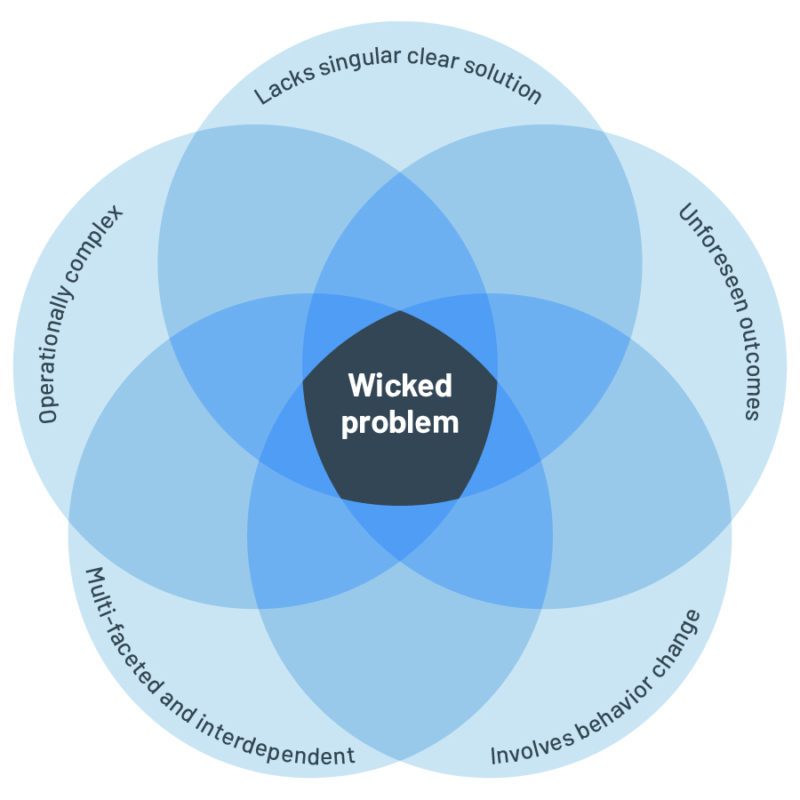How firms can develop better answers
In part 2 of this series, I illustrated how a defined a ‘go-to-market-strategy’ helps leadership teams address the ‘wicked problem’ of continued success.
This instalment explores how firms can enhance client success, highlighting some of the challenges usually encountered and the important questions that often remain unasked.

Delivering Client Success
- Previously, I emphasized the importance of putting clients first, building a meaningful sector strategy, and focusing on client experience. I’ve seen firms that tend to include elements of all of these important factors in setting the initial strategy, but are not as thorough as they could be in regularly reviewing progress.
In order to constantly improve how they add value for their clients, leadership teams should regularly consider the following questions across five key areas of the client relationship.
Business knowledge
- Do we have a fundamental understanding of what our client does and the market in which they operate?
- What are we doing to ensure that we stay current on commercial and legal developments that affect our client?
- How do we ensure our professionals develop and maintain expertise in our client’s key areas?

One persistent critique from in-house General Counsel is that lawyers often provide pages of academically sound thought but have little relevance to the client’s market realities. Conversely, lawyers who are regularly considered by clients as market leaders are those that make the extra effort to align the ‘legal answer’ into relevant and client-specific commercial advice.
Leadership teams should foster a strong culture of learning and development, enabling their talent to better understand clients’ businesses as well as continuing legal education. Alongside external and internal training, the best training programs often include elements that have been co-designed with the firm’s clients and, ultimately, embrace a deeper client relationship.
Understanding needs
- Ask Yourself: Do we have adequate and consistent processes in place to ensure a detailed understanding of client needs?
- Beware the Ivory Tower: Are we constantly asking the right questions to ensure we are not providing guidance in a vacuum?
- The Extra Mile: Do we ask the challenging questions that enable us to provide the required client support rather than simply meeting their expressed needs?
In my experience as an Associate, I found myself asking Partners context questions that they simply couldn’t answer because client instructions were taken at face value. This scenario is particularly prevalent in more technical practice areas, where lawyers are sometimes guilty of enthusiastically rushing off to solve the academic conundrum before truly grasping the client’s commercial imperatives.
Inroads here can be as simple as having a set process to client engagement, providing example best practice questions as initial instructions are taken. However, leading firms take this a step further with their best Partners in this area – often heavily supported by the Learning & Development team – passing on the learnings of their proven approach to the next generation in the firm
Setting expectations (for the Client and the Firm)
- Do we clearly define the scope of the client advice we provide (including what may not be included)?
- Are we consistent in managing and delivering outcomes against agreed upon timeframes?
- Do we have a transparent process in place for any misalignment around expectations?

A significant proportion of client dissatisfaction is often rooted in the parties not clearly defining the scope and timing of the engagement from the onset. Conversely, it is incredibly difficult for a firm to demonstrate (or for the client to fully appreciate) over performance if the success criteria was not agreed upon first. Again, leadership teams can help through standardisation and implementing a detailed ‘post instruction’ review process.
However, even with a well-defined scope of work, expectations on either side can change as the project unfolds. Partners at leading firms will regularly check-in with their clients to make sure that expectations remain in sync and address potential misalignment with an empathetic and solutions-focussed approach.
Delivering value
- Do we regularly assess whether we successfully deliver advice that the client wants and/or needs?
- Do we engage with the client to determine a mutually optimum price level?
- Is anyone on our team looking at the client relationship over time from a mutual ROI perspective?
This is an area which the majority of firms have historically shied away from, but I think this actually represents the biggest opportunity for leadership teams to positively change the commercial dynamic between firm and client. This goes beyond simply inquiring if the client is happy with the services provided and into quantifying the real value that the advice enabled the client to achieve.
Some of the leading US-based firms have mastered this approach, opening the door to consistent value-based pricing and enabling a sustainable shift from reliance on time-based billing – delighting both client and firm alike. That door swings both ways of course and firms will have to ensure that they are constantly delivering real value to their clients if they want to get paid, which is arguably no bad thing.
Good communication
- Throughout the client matter lifecycle, do we communicate at regular intervals with meaningful updates?
- Do we regularly request, and give, feedback to both improve current results and also strengthen the overall relationship?
- Is there a level of honesty with the client that enables us to have the difficult conversations sometime necessary to achieve the best results?
Most would agree that communication (or lack thereof) can make or break a relationship and training around communication skills is still relatively nascent. There are many reasons for this, but I would argue that is starts at the top – if a firm has a leadership team that prizes open communication, constructive feedback, and honest dialogue, the promoted culture empowers everyone to communicate better.
Simply talking or emailing as tends to be the case these days is not necessarily ‘communicating’ with a client and such actions are often one-sided with little interaction or meaningful substance. Leadership teams must work hard to constantly reinforce the importance of genuine communication if the firm wants to develop a truly successful client relationship. Whether it was William H. Whyte or George Bernard Shaw who first commented, never has it been truer that ‘the single biggest problem in communication is the illusion that it has taken place’.
In summary, there is no silver bullet for firms to the challenge of securing, developing, and retaining great clients. To a large extent, it is an area where the success achieved is almost directly proportional to the effort that everyone in the firm puts in. However, having a leadership team that is regularly asking business questions, all from a perspective of the client’s success, will almost certainly put your firm on the right path.

Perhaps Jeff Olson’s book The Slight Edge, sums it up: Success is not one thing you do or based on one event. It manifests as a sum of all the small actions you take, questions you ask, decisions reached and shared. Success is not a singular destination but an evolving journey that requires re-examination at every stage along the way.
Next week, I consider how firms should consistently review their strategy for growing revenue. In the meantime, you can explore more inspiration and resources for leaders & partners, including our latest COVID-19 law firm research findings.
